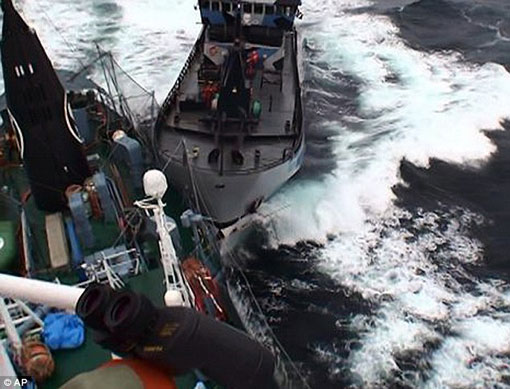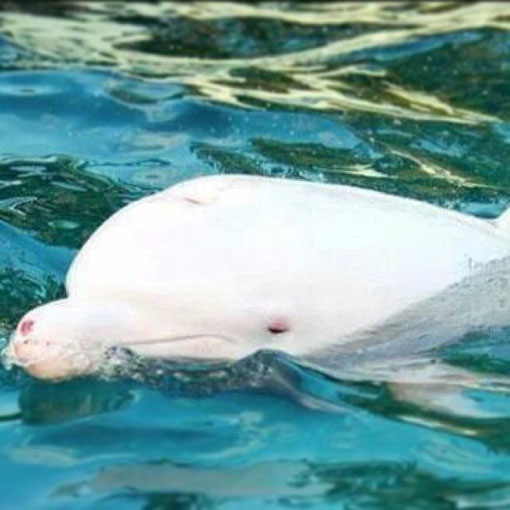You are hereBlogs / WcP.Observer's blog / St Valentine, shelter cetacean mammals, high-IQ whales & dolphins; brain wt: whale 9000g, dolphin 1500g, human 1200g max
St Valentine, shelter cetacean mammals, high-IQ whales & dolphins; brain wt: whale 9000g, dolphin 1500g, human 1200g max

US Ambassador to Japan Caroline Kennedy calls Japan's dolphin slaughter “inhumane”










(quote)
US Ambassador to Japan Caroline Kennedy calls dolphin killing “inhumane”
Caroline Kennedy, the newly minted U.S. Ambassador to Japan, has spoken out against the country’s practice of dolphin killing, calling it “inhumane” with this post on her official Twitter:
Deeply concerned by inhumaneness of drive hunt dolphin killing. USG opposes drive hunt fisheries.
An annual dolphin hunt season, which runs from September to March, takes place in the western Japanese town of Taiji. As depicted in the Oscar-winning 2009 documentary “The Cove,” fishermen use a method called “drive hunting,” to herd a few hundred dolphins into a cove, where they are trapped by fishing nets. Some are released, a few are chosen to be sold to marine parks and aquariums, but the majority are slaughtered on shore for meat.
The US government (USG), as Kennedy points out, opposes drive fisheries.
Timothy Hitchens, the British Ambassador to Japan, also expressed his concern on Twitter, writing “UK opposes all forms of dolphin and porpoise drives; they cause terrible suffering. We regularly raise (the issue) with Japan.”
Reuters reports that on Tuesday, “at least 30 dolphins out of the group of more than 200 held in the cove since Friday were herded by boat engines and nets into a killing area of the Taiji cove.
"Fishermen waiting in the shallow waters by the shore, some in wet suits with snorkeling masks on their faces, wrestled the dolphins into submission and tied their tails with ropes to stop them from escaping.
“Before the killing began, fishermen pulled a tarpaulin in front of the cove to prevent activists and reporters from seeing the killing. A large pool of blood seeped under the tarpaulin and spread across the cove.”
23000 dolphins slaughtered yearly in hidden COVE. Japan covers it up. In US, $1500-3500 reward to get the one who killed dolphin
"I'm in Japan five, six times a year, and I see this slaughter every day for weeks on end," says O'Barry, a marine mammal specialist for Earth Island Institute, a nonprofit environmental group. "Words just fail me." The Cove, a nail-biting film about annual slaughter of thousands of dolphins in Japan directed by famed photographer Louie Psihoyos, was financed by Netscape founder and Palm Beacher Jim Clark, whose only edict was this: "Make a difference."
The group, including expedition director Simon Hutchins of Fort Lauderdale, headed to the small town of Taiji, the largest supplier of dolphins to marine parks and swim-with-dolphin programs around the world. Each dolphin sells for up to $150,000, according to the film. After dolphin trainers make their selections, the remaining mammals are killed. Over several months, fishermen herd thousands of dolphins into an isolated cove and stab them with spears. The flesh, sold for food in Japan, is contaminated with mercury, accumulated from the smaller fish they eat.
Tuesday, Sep. 25, 2012 - NEW ORLEANS -- Someone shot and killed a bottlenose dolphin found over the weekend on Elmer's Island Wildlife Refuge, and there's a $1,500 reward for information leading to a conviction, the National Oceanic and Atmospheric Administration said Tuesday. The Whale and Dolphin Conservation Society is offering the reward, said NOAA Fisheries spokeswoman Kim Amendola.
Ocean guardians: father-son team Ric & Lincoln O'Barry reveal the truth behind dolphin trade in "The Cove" & "Blood Dolphins"
Ric O'Barry has been a leader against the cruelty inflicted upon dolphins since his days working with them during the 1960s television series "Flipper." One of the areas of the world that O'Barry, along with his son Lincoln, have targeted over the past few years is Taiji, Japan where a spot called "The Cove" became the basis of an Academy Award-winning 2009 documentary about their efforts to stop the slaughtering of dolphins. With their new three-part Animal Planet mini-series, "Blood Dolphins," the O'Barrys pick up where "The Cove" left off with the team again trying to save the lives of innocent dolphins from senseless slaughter.
Sea Shepherd Conservation Society & Sea Shepherd Cove Guardians at “World Love For Dolphins” Day Demonstrations This Valentine’s Day - Demonstrations To Take Place in the U.S. and Overseas Against Taiji’s Brutal Dolphin Hunts
On the heels of the recent global outcry condemning the brutal and inhumane dolphin hunts in Taiji, Japan, Sea Shepherd Conservation Society is inviting supporters and all concerned individuals to join Sea Shepherd Cove Guardians in targeted demonstrations on February 14, 2014 against Taiji’s brutal capture and slaughter of dolphins.
On February 14, 2014, Sea Shepherd USA chapters will be leading demonstrations at the Embassy of Japan in Washington, D.C. and Japanese consulates in cities across the country to stand in solidarity with the Cove Guardians in demanding an end to the bloodshed in Taiji. Sea Shepherd invites anyone who cares about dolphins to join us for peaceful “World Love for Dolphins Day” demonstrations on Valentine’s Day to raise our voices for the dolphins. On a day meant to celebrate love, we will show Japan the love felt by the people of the world for dolphins.
“Valentine’s Day is the perfect time to stand with Sea Shepherd at the Embassy and Consulates of Japan and tell the Japanese government that the world holds dolphins very near and dear to our hearts and we will not tolerate this brutal slaughter by a small group of men who are dishonoring Japan to sell dolphins to the captive industry. We hope that thousands of people will turn out to show their love for dolphins and ask Japan to end the needless killing,” said Susan Hartland, Administrative Director, Sea Shepherd Conservation Society USA.
New York Times Runs Ad Calling For End To Taiji’s Dolphin Hunt
An ad was run in the New York Times on Thursday, calling for an end to the brutal dolphin hunts that have been going on in Taiji, Japan. The ad features a photo of the baby albino dolphin, dubbed “Angel” captured in the cove four weeks ago who is now being held in an aquarium in Taiji.
The ad was placed by the Dolphin Project, a project of the Earth Island Institute run by Ric O’Barry, a former trainer who appeared in the Oscar-winning film about the dolphin hunt, “The Cove.” It directs through the Dolphin Project’s website to send a letter to Japan’s Prime Minister, Shinzo Abe, urging him to end the hunt.
"The Japanese government has no excuse for these cruel and needless dolphin slaughters,” said David Phillips, Executive Director of Earth Island Institute. “Japan is badly damaging its international standing and support around the world. Even in Japan, the vast majority of Japanese do not eat dolphin or whale meat and have no interest in it.”
Dolphin roundups and slaughter -- brought powerfully to the public’s imagination by the Oscar-winning documentary “The Cove” -- happen every year in Japan...
All white, mate! Rare humpback whale spotted off Australian shores
DOLPHIN INTELLIGENCE
The largest brain in the world belongs to the sperm whale. Weighing some 9,000 grams, it is six to seven times larger than the human brain. The second largest brain in the world is the killer whale (or orca) at 6,000 grams. Elephants have extremely large brains as well. The next largest brain among the cetaceans is the bottlenosed dolphin at 1,500 grams, followed by human brains at approximately 1,200 grams.
The cerebellum in a cetacean brain has more convolutions than in other mammals. According to researchers, this indicates an unusually high level of intelligence.
The brain surface area of a bottlenose dolphin is more than 1,400 square centimeters larger than a human being’s.
Strong connections between the sensorial and motive areas of a dolphin’s brain to the body indicate that it is very much sensitive to pain and stress.
(unquote)
Image courtesy Wikipedia, Sea Shepherd Conservation Society, thedodo.com, Koji Sasahara / AP, REX / Jenny Dean, Animal Planet, Junji Kurokawa / AP, and TV.com


















